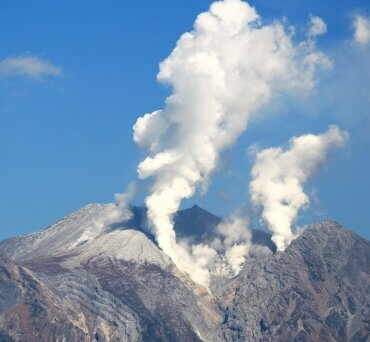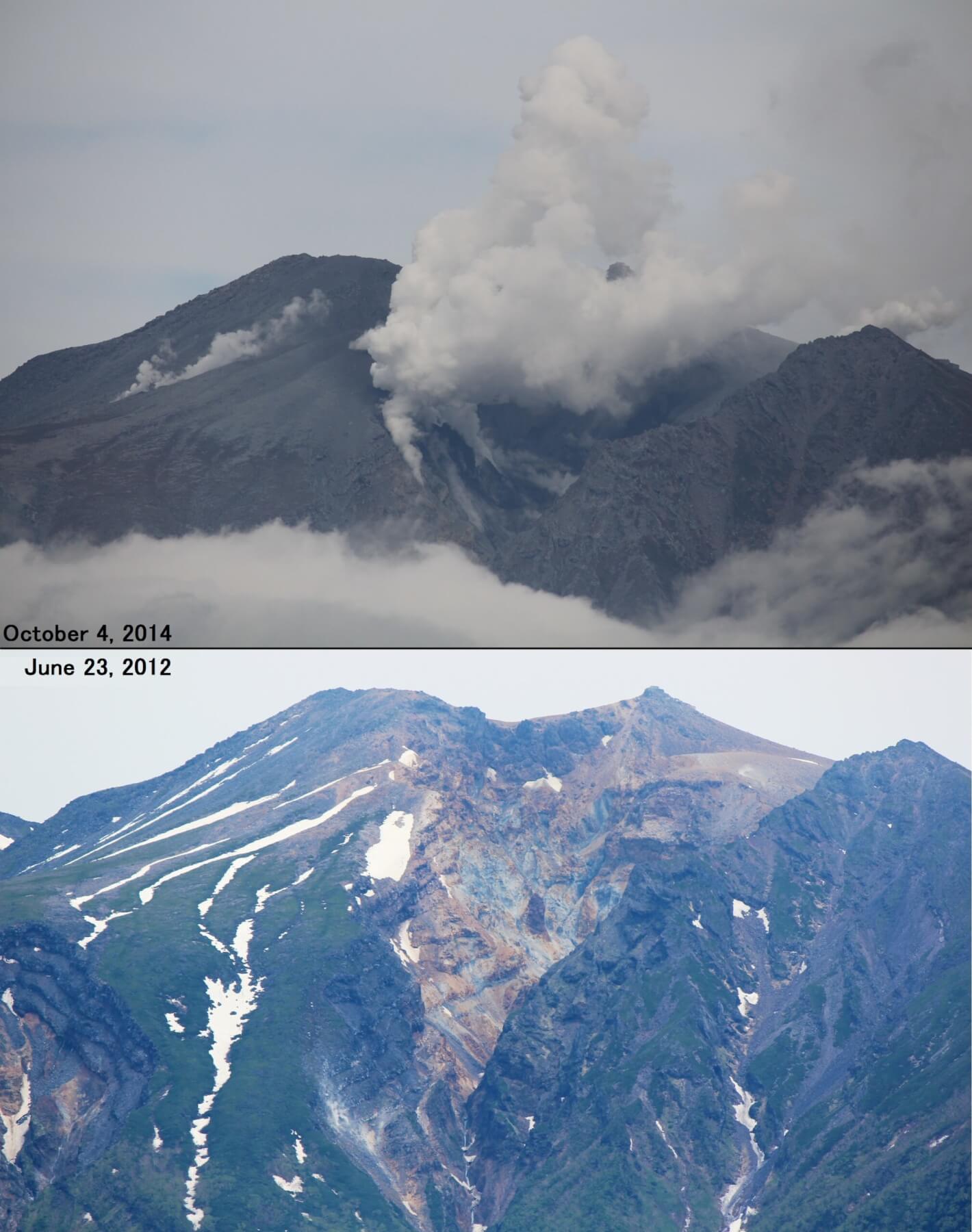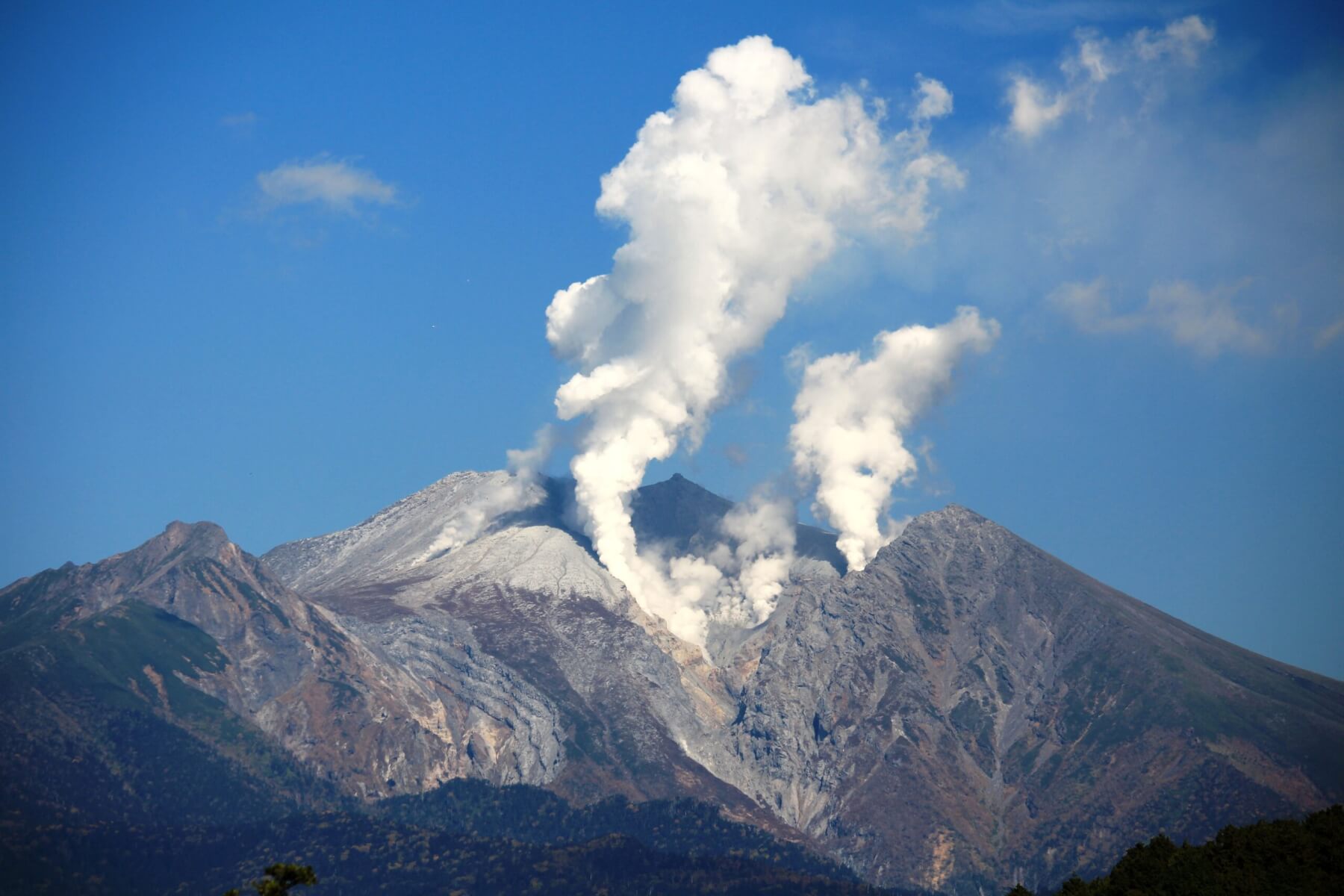
Mount Ontake from Kurakake Pass. Photo: Alpsdake
On September 27, 2014, Ontake volcano in Japan produced a phreatic eruption, a steam-driven eruption that does not involve rising magma.
This could have been a relatively small event that wouldn’t capture too much international attention, with Japan being a country that has plenty of active volcanoes. We could have seen footage of ash plumes and pyroclastic flows that would have been quickly forgotten by the next news cycle.

By Alpsdake – Own work1. File:2014 Mount Ontake eruption (October 4).JPG by Alpsdake2.
But this eruption happened before noon, when around 340 hikers were on and around the summit.
People who had been nearby reported no noises heard with the start of the eruption. It began with new vents opened and within about 10 seconds a cold and dry pyroclastic flow engulfed people nearby. One reporting no burns to his skin, but his hair was damaged and chocolate in his backpack melted.
Ballistic ejecta made of older volcanic rock from past eruptions were blasted from the vent, and throughout the eruption it was these that would turn this event into one to be remembered for the worst of reasons. Sadly, 63 people would lose their lives that day, most because of impact when these ballistic rocks landed. Some would never leave the mountain.
The ballistic rocks were blown out of the vent at speeds of 145 to 185 metres a second as rapidly expanding steam produced the shallow eruption. Along with their velocity, the sheer number of ballistics that can be ejected during an eruption is harrowing. They can also travel far, with impacts often occurring within hundreds of metres out to kilometres from the vent.
There was no warning for the hikers. It was a calm day and there were no signs at the summit that an eruption was about to take place. While they can give some warning, sometimes seen in hindsight, phreatic eruptions do not give the usual precursory signals that a magmatic eruption does. With a magmatic eruption, it is the magma itself rising towards the surface that gives the warning signs.
Phreatic or hydrothermal eruptions occur around the world fairly frequently, but they are difficult to forecast. Work is being done to better understand the more subtle warning signs that tell steam is pressurising, leading to an explosion. There is more to understand about how the system itself pressurises, and at what point this leads to a dangerous event.
A similar phreatic eruption had occurred in 1979 just before dawn, the first known historical eruption of Ontake. Smaller phreatic eruptions occurred again in 1991 and 2007. Both the 1979 and 2014 eruptions were similar in nature and in size. There were no fatalities during the earlier eruption, so what makes this more recent one different?
The 2014 eruption occurred on a Saturday, and because of the midday people had reached the wrong place at the wrong time. The event illustrates how the timing of an eruption is an important factor and can be the difference between a small eruption that doesn’t leave behind much of a record, and a tragedy.

Mount Ontake seen from Kurakake Pass, in Ōtaki. By Alpsdake – Own work, CC BY-SA 4.0








